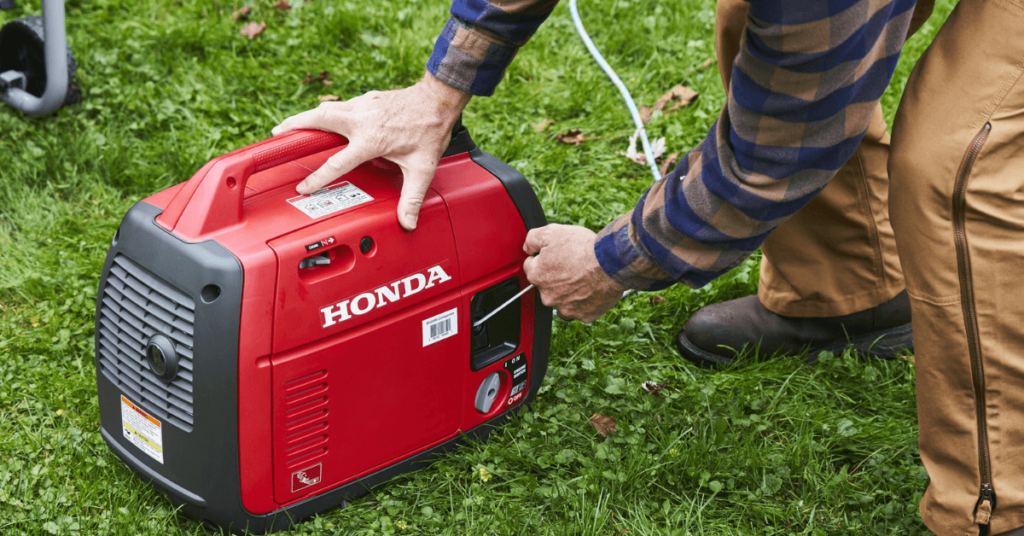Electric generators play a vital role in our daily lives by providing electrical power for a wide range of applications, from homes and businesses to hospitals and data centers.
Electric generators convert mechanical energy into electrical energy, but the output voltage of a generator may fluctuate due to changes in load, temperature, and other factors. These voltage fluctuations can be detrimental to electrical equipment and appliances, as they require a stable voltage to function correctly.
To ensure that the voltage output of an electric generator remains stable and within acceptable limits, voltage regulators are used. A voltage regulator is an electronic device or circuit that maintains a constant output voltage despite changes in input voltage, load current, or temperature. One of the most common voltage regulators used in electric generators is a choke. A choke is an inductor that is specifically designed to block high-frequency signals while allowing low-frequency signals to pass through.
In an electric generator, a choke is used as a voltage regulator by limiting the current flow in the field winding of the generator, thereby regulating the output voltage. The use of a choke in an electric generator helps to stabilize the output voltage and improve the overall performance of the generator. In this article, we will explore the role of a choke in electric generators, its different types, design and construction, applications, maintenance, and future developments.

Understanding Electric Generators
An electric generator is a device that converts mechanical energy into electrical energy. It works on the principle of electromagnetic induction, where a moving magnetic field induces an electrical current in a conductor. There are two main types of electric generators: AC generators and DC generators. AC generators produce alternating currents, while DC generators produce direct currents. Electric generators consist of various components, including the stator, rotor, exciter, and voltage regulator.
Importance Of Voltage Regulation In An Electric Generator
Voltage regulation is an essential process that is required to maintain a stable output voltage in an electric generator, even when there are changes in load and other factors. A stable voltage is critical because electrical equipment and appliances require a consistent voltage level to function correctly.
If the voltage output of an electric generator is too high or too low, it can damage the equipment or appliances connected to it. For instance, if the voltage output is too high, it can cause overheating and premature failure of the equipment or appliances. Conversely, if the voltage output is too low, it can cause the equipment or appliances to malfunction or fail to operate altogether. Therefore, voltage regulation is essential to ensure that the output voltage remains stable and within acceptable limits.
Voltage regulators are used in electric generators to ensure that the output voltage remains stable and within acceptable limits. A voltage regulator is an electrical component that is designed to maintain a steady output voltage regardless of changes in load or other factors. Voltage regulators can be either passive or active.
Passive voltage regulators are simple and do not require any external power source or control circuitry. They are often used in low-power applications where precise regulation is not required. Active voltage regulators, on the other hand, require an external power source and control circuitry. They are often used in high-power applications where precise regulation is critical.
What Is A Choke?
A choke is a type of passive electrical component that is used in electric circuits to regulate the flow of current or voltage. The choke is essentially an inductor that is designed to store energy in a magnetic field. The stored energy in the choke’s magnetic field is then used to provide a stable output voltage in an electric circuit.
One of the primary functions of a choke is to reduce the level of unwanted noise or interference in a circuit. The choke acts as a filter that blocks high-frequency signals while allowing low-frequency signals to pass through. This is particularly useful in applications where a clean and stable power supply is required, such as in audio circuits or power supplies for sensitive electronic equipment. By blocking the high-frequency signals that can cause interference, the choke helps to ensure that the output voltage of the circuit remains stable and free from noise.
In addition to reducing unwanted noise and interference, chokes also play an essential role in voltage regulation in electric circuits. Chokes are commonly used as part of voltage regulators to stabilize the output voltage and ensure that it remains within acceptable limits. Chokes can be used in both AC and DC circuits, and they are particularly useful in applications where the load is highly variable.
The design and construction of chokes depend on several factors, including the required inductance value, the frequency range of the circuit, and the power level of the circuit. The basic design considerations for chokes include the number of turns, the wire diameter, and the core material. Chokes can be constructed using various materials, including iron, ferrite, and air. The choice of core material depends on the required inductance value and the frequency range of the circuit.
Overall, the choke is a critical component in many electrical circuits, playing a vital role in reducing noise and interference and stabilizing the output voltage. The proper selection, design, and construction of chokes can provide a reliable and cost-effective solution for voltage regulation in electric circuits. As technology continues to evolve, future developments in choke technology are expected to further enhance its performance, efficiency, and functionality.
The Role Of A Choke In An Electric Generator
In an electric generator, a choke is used as a voltage regulator. The choke is connected in series with the field winding of the generator. When the generator is under load, the current flowing through the field winding creates a magnetic field that induces an output voltage in the armature winding. The choke in the field circuit limits the current flow and regulates the output voltage of the generator. The choke acts as a low-pass filter that blocks high-frequency signals and allows low-frequency signals to pass through. As a result, the output voltage of the generator is stabilized and remains within acceptable limits.
The Different Types Of Chokes Used In Electric Generators
There are several types of chokes used in electric generators, including air-core chokes, iron-core chokes, ferrite-core chokes, and common-mode chokes.
Air-Core Chokes
Air-core chokes are the simplest type of chokes, consisting of a coil of wire wound around a non-magnetic core. Air-core chokes are used in applications where high inductance values are required, and low losses are acceptable.
Iron-Core Chokes
Iron-core chokes are similar to air-core chokes, but they have an iron core that provides a higher level of inductance. Iron-core chokes are used in applications where high inductance values are required, but losses can be tolerated.
Ferrite-Core Chokes
Ferrite-core chokes are similar to iron-core chokes, but they use a ferrite core instead of an iron core. Ferrite-core chokes have a high inductance and low losses, making them suitable for high-frequency applications.
Common-Mode Chokes
Common-mode chokes are used to suppress common-mode noise in electrical circuits. Common-mode noise is a type of noise that is present on both the line and ground conductors of a circuit. Common-mode chokes consist of two coils wound on a common core, and they are used to suppress common-mode noise by providing a high impedance to the noise signals.
Design And Construction Of Chokes
The design and construction of chokes depend on several factors, including the required inductance value, the frequency range of the circuit, and the power level of the circuit. The basic design considerations for chokes include the number of turns, the wire diameter, and the core material. Chokes can be constructed using various materials, including iron, ferrite, and air. The choice of core material depends on the required inductance value and the frequency range of the circuit.
Performance Characteristics Of Chokes
The performance characteristics of chokes include inductance, resistance, quality factor (Q), self-resonant frequency (SRF), and maximum rated current. Inductance is the measure of a choke’s ability to store energy in a magnetic field. Resistance is the measure of a choke’s opposition to the flow of current. Quality factor (Q) is a measure of a choke’s efficiency in storing energy in a magnetic field. Self-resonant frequency (SRF) is the frequency at which the choke’s inductive reactance is equal to its capacitive reactance. Maximum rated current is the maximum current that a choke can handle without saturating.
Applications Of Chokes In Electric Generators
Chokes are used in electric generators to stabilize the output voltage and improve the overall performance of the generator. Chokes are used in both AC and DC generators, and they are particularly useful in applications where the load is highly variable. Chokes are also used in inverters, power supplies, and other electrical equipment where a stable output voltage is required.
Comparing Chokes With Other Voltage Regulators
Chokes have several advantages over other types of voltage regulators, including simplicity, reliability, and low cost. Chokes are passive components that do not require any external power source or control circuitry, making them simple and reliable. Chokes are also relatively inexpensive compared to other types of voltage regulators. However, chokes have some disadvantages, including limited frequency response, low efficiency, and large size.
Maintaining And Troubleshooting Chokes
Chokes require regular maintenance to ensure that they are functioning correctly. Common issues that can affect the performance of chokes include short circuits, open circuits, and saturation. Short circuits and open circuits can be caused by physical damage to the choke, while saturation can be caused by excessive current flow. Troubleshooting common issues involves checking the resistance, inductance, and continuity of the choke using a multimeter or other testing equipment. It is important to take appropriate safety precautions when working with chokes, as they can store a significant amount of energy.
Future Developments In Choke Technology
Current trends in choke technology include the development of smaller, more efficient chokes that can handle higher frequencies and power levels. Emerging technologies in choke design and construction include the use of new materials, such as nanocrystalline cores and soft magnetic composites. Potential future applications of chokes in electric generators include the development of smart chokes that can adjust their output voltage based on the load requirements.
Final Thoughts
The role of a choke in electric generators is crucial for stabilizing the output voltage and ensuring that electrical equipment and appliances receive a stable voltage to function correctly. With the proper selection, design, and construction, chokes can provide a reliable and cost-effective solution for voltage regulation in electric generators. As technology continues to evolve, future developments in choke technology are expected to further enhance its performance, efficiency, and functionality.
FAQs
What is the difference between a choke and an inductor?
A choke is a type of inductor that is specifically designed to block high-frequency signals while allowing low-frequency signals to pass through.
Can a choke be used to regulate frequency in an electric generator?
No, chokes are used to regulate voltage, not frequency.
How do I know if my electric generator needs a choke?
If your electric generator experiences voltage fluctuations under varying load conditions, it may benefit from the use of a choke.
Can chokes be added to an electric generator after it has been manufactured?
Yes, chokes can be added to an electric generator after it has been manufactured.
How long do chokes last in an electric generator?
The lifespan of a choke depends on several factors, including the materials used, the operating conditions, and the level of maintenance. With proper maintenance, chokes can last for many years.
Are there any safety risks associated with working with chokes in an electric generator?
Yes, chokes can store a significant amount of energy, and appropriate safety precautions should be taken when working with them. It is recommended to seek professional assistance when dealing with chokes in an electric generator.
Conclusion
In conclusion, chokes play an essential role in electric generators by stabilizing the output voltage and improving the overall performance of the generator. Chokes are simple, reliable, and relatively inexpensive compared to other types of voltage regulators.
However, chokes have some limitations, including limited frequency response, low efficiency, and large size. Regular maintenance and appropriate safety precautions are necessary when working with chokes. Future developments in choke technology include the development of smaller, more efficient chokes that can handle higher frequencies and power levels, as well as the development of smart chokes that can adjust their output voltage based on load requirements.




